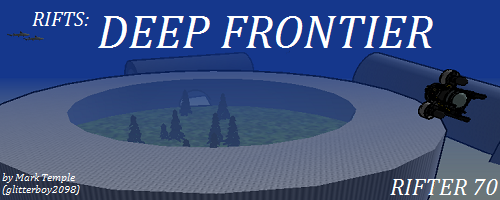ShadowLogan wrote:Seto wrote:But according to official sources for Robotech, that is a solid-ammo cannon... not a laser.
(You may facepalm when ready, because we both know what the dialog says and I'm already doing it.)
Well nothing in the dialogue really establishes it as a solid projectile cannon (even the curving trajectory IS technically possible with a laser, both technologically and natrually), and the dialogue should really take precedent here. I almost have to wonder how much "series" checking actually happens, even though that is supposed to be at the top of the chain.
Also the RT.com Infopedia does mention a beam cannon upgrade "A later variant developed just in time for the Second Robotech War was the VHT-1A1, which differed from the earlier model in that it replaced the heavy cannon with a large beam cannon. ", which a laser would qualify as (per dialogue, so Dana was using a -1A1). I know it doesn't exactly mesh with the RPG (1E or 2E), but in terms of official.Seto wrote:The utility of optical cameras only works in long-term observation and analysis... LIDAR offers virtually instant results over distances of a light-second or so, which is all the range they actually NEED for their early warning system against shadow stealthed fighters.
(Mind you, it occurred to me that there's another way they should have been able to detect them... they have gravimetric sensors, so why can't they see the abnormalities in local gravitation caused by shadow fields?)
Star Trackers used for navigation aren't going to be that long term though in exposure times. One I read the specs on form the company website listed >90% accuracy in 60sec. Another can acquire full field acquisition in 5sec (0.4sec reduced field of view) max time. And the Shuttle used star trackers during "rendezvous or proximity operations with a target satellite" (quote per NASA website), which really cuts into the argument that camera systems are by default slow. A LIDAR system will still need to process the data, just like a camera system.
As for gravity based sensing, I don't think that would work. Recall that the N-S warheads use their shadow devices to "cloak" the strong gravitational forces of the matter w/n the warhead (PttSC), and IIRC didn't the rescue mission to the SDF-3 use the Shadow Device at the end point of its journey near the blackhole? Shadow Fields might show up in other EM band images as "blank spots" in the background though (unless they can refract background emissions around them w/o any tell tale signs).
Star Tracker Links:
http://science.ksc.nasa.gov/shuttle/tec ... ar-tracker
http://www.ballaerospace.com/page.jsp?page=104 (quicklinks, these open PDF files)ZerO Kay wrote:LIDAR would only work slightly better at detecting an F-117 for the same reason as radar. Part of the stealth is the material, which the LIDAR would probably not be affected by but the angled surfaces would cause the laser beam do deflect just like a radio beam.
No it should be better at detection that radar. The angled surfaces and material are calibrated for specific frequency ranges, which LIDAR can operate away from. Plus LIDAR can be used in other ways to detect stealth aircraft.
No, the RAM is dependant on frequency the angles are not. An angled surface redirects the brunt of and beam radiated toward it. I'm sure the LiDAR can be used the same way a cell net has been theorized to work and the way a series of TPS-75s would.
 you some might think you're a
you some might think you're a  but you're cool in book
but you're cool in book 


 and no way to get you back for it
and no way to get you back for it 